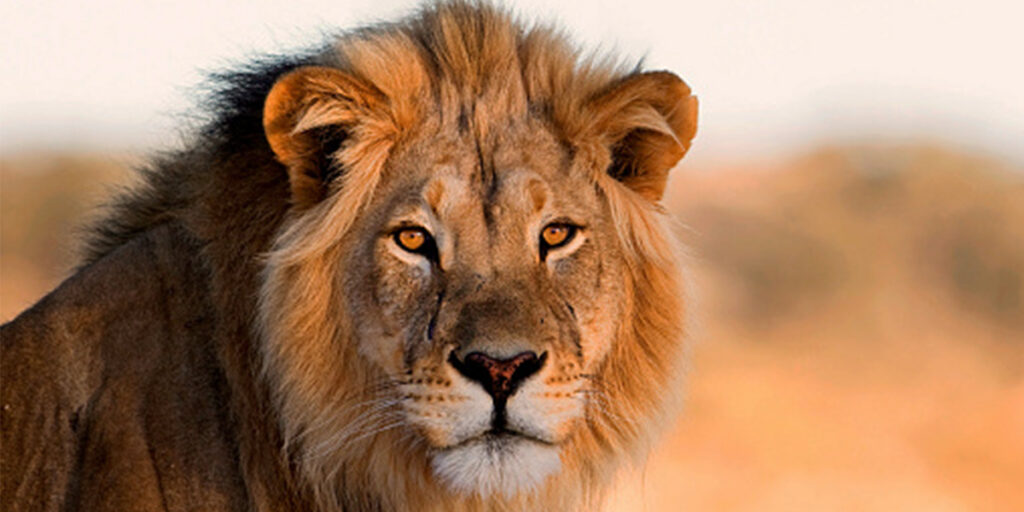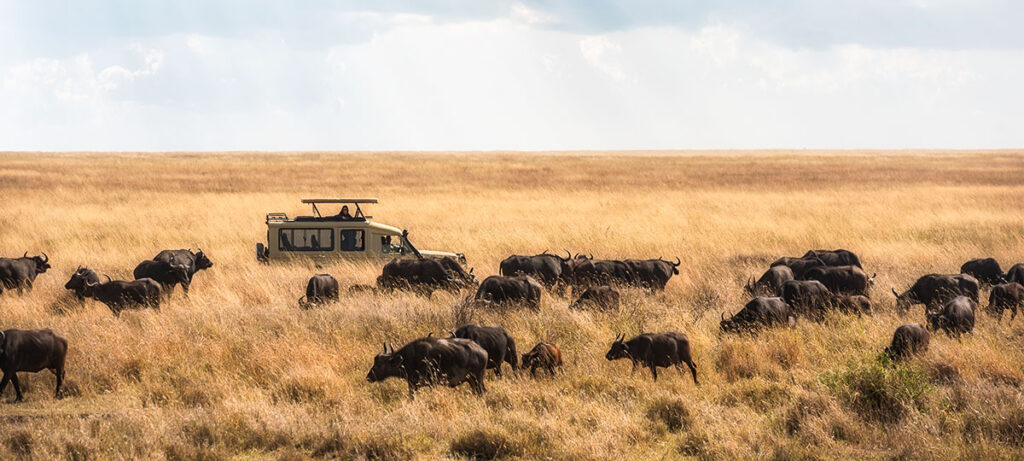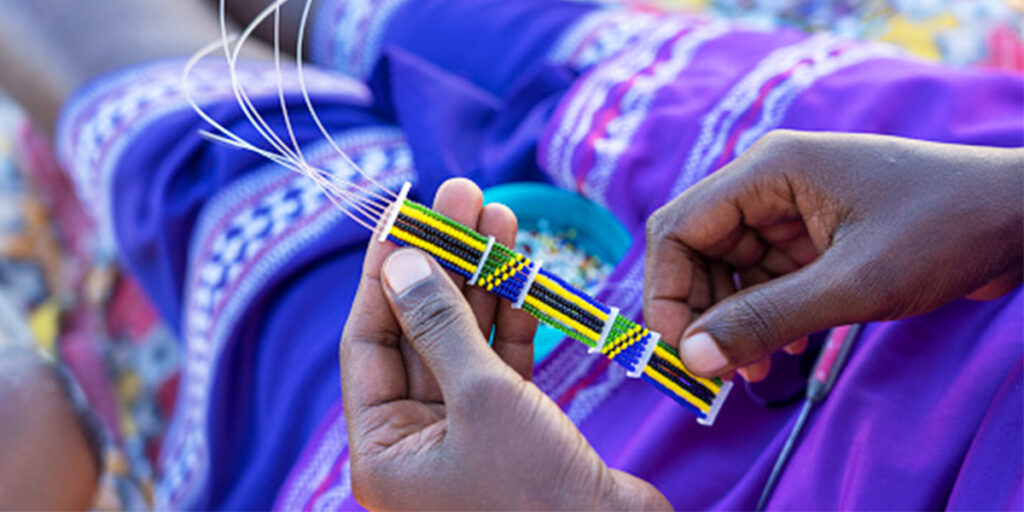The best time to visit Tanzania depends on your individual interests, as while Tanzania can be visited year-round, certain times of year are better suited to particular activities. This comprehensive guide explores Tanzania’s seasons in detail, explaining their impact on various experiences and offering suggested itineraries to help you plan your perfect Tanzanian adventure.
Understanding Tanzania’s Seasons: A Month-by-Month Deep Dive
Tanzania’s distinct seasons shape the landscape and influence wildlife viewing, trekking conditions, and coastal activities. Let’s explore each month in detail:
January – February: Short Dry Period – Coastal Paradise and Serengeti Calving Season
Coastal areas enjoy warm temperatures, calm seas, and ideal conditions for snorkeling, diving, and beach relaxation – perfect for a Zanzibar itinerary combining beaches, spice tours, and culture. Inland, national parks have pleasant temperatures (though higher altitudes like Ngorongoro are cooler).
The Serengeti’s short rains create a lush backdrop for the wildebeest calving season, offering exceptional wildlife viewing, especially newborns and predators.
A combined Serengeti calving safari and Zanzibar beach stay is a popular option.
January is also a good time to climb Kilimanjaro due to drier conditions and clearer skies, though climbers should be prepared for unpredictable mountain weather.
March – May: The Long Rains – A Unique and Less Crowded Experience
The long rains begin in March, marking the start of the low season. While it can be hot and humid, early March can still be a good time to tackle Kilimanjaro, especially for experienced climbers. However, by mid-March, heavy afternoon thunderstorms become more frequent, making this period less popular time to climb, so you’ll encounter fewer crowds, but you need to be prepared for potentially challenging conditions. due to muddy trails and reduced visibility.
During the rainy season, the northern routes, especially the Rongai route, tend to be favored. Here’s why: Rongai Route: This route approaches Kilimanjaro from the northern side, which generally receives less rainfall than the southern and western sides. While you’ll still likely encounter rain, it might not be as heavy or consistent as on other routes.
Some accommodations, particularly in southern parks, may close for the season. Despite the rain, May offers unique opportunities. The wildebeest rut (mating season) begins, and their northward migration starts, providing a dramatic wildlife spectacle. This period also sees fewer crowds, offering a more intimate experience.
A potential itinerary could involve exploring less-visited parks during the green season, enjoying the lush landscapes and fewer tourists.
While the rain can be a challenge, March – May can also be consider the best time to visit Tanzania as this period brings unique advantages, such as fewer crowds, lower prices, and a more authentic experience. If you’re prepared for the rain and embrace the island’s natural beauty, you can have a wonderful and memorable trip to Zanzibar during the rainy season.
June – October: The Dry Season – Peak Season for Safaris and Kilimanjaro Climbs
June signals the dry season, widely considered the best time to visit Tanzania for classic safaris and Kilimanjaro climbs. Pleasant, dry temperatures create ideal conditions for game viewing as animals congregate around dwindling water sources.
The Great Migration is in full swing, offering unparalleled wildlife encounters. Imagine a classic Serengeti safari itinerary, following the wildebeest herds as they traverse the plains. July brings the dramatic Mara River crossings, a highlight of the Great Migration.
August boasts large elephant herds in Tarangire and Ruaha, and opportunities to spot rarer animals like wild dogs and black rhinos.
September is perfect for Zanzibar, coinciding with turtle hatching season. October provides excellent Kilimanjaro climbing conditions.
November – December: Short Rains – Lush Landscapes and Whale Shark Encounters
The short rains begin in November, usually short afternoon showers that rarely disrupt travel plans. The landscape transforms into a vibrant green paradise, attracting migratory birds. December sees the rains continuing, further revitalizing the environment.
Coastal areas offer fantastic opportunities to swim with whale sharks, a truly unforgettable experience. This is a great time to visit, offering a balance of pleasant weather, fewer crowds, and unique wildlife experiences.
A possible itinerary could combine a northern circuit safari with whale shark encounters off the coast of Mafia Island.
Summary: Best Time to Visit Tanzania for Different Activities
Best time to visit Tanzania for Wildlife Safaris:
- June – October: Prime time for classic safaris, especially the Great Migration and predator activity.
- May & November: Good balance of wildlife viewing, fewer crowds, and green landscapes.
- January – March: Excellent for the Serengeti calving season.
- December: Lush landscapes, good visibility, and fewer crowds than peak season.
- April: Challenging due to rains and vegetation; suitable only for experienced safari-goers focused on birdwatching or landscapes.
Best time to visit Tanzania for Climbing Mount Kilimanjaro:
- January & February: Good conditions. Warmer at lower altitudes. Potential showers, especially lower down. Possible summit snow. Fewer crowds than peak season.
- June – October: Dry season. Most popular time to climb. Best weather overall. Expect more crowds. Machame and Lemosho are popular routes. Northern Circuit and Umbwe are also options.
- December: Good time for climbing Kilimanjaro. Warmer month. Usually, it is drier than November and early during the year. Fewer crowds than in the peak season. Good balance of weather and crowds.
- March: Transitional month. Long rains start. Conditions unpredictable. Fewer crowds. Prepare for rain and mud. Rongai is often recommended.
- April & May: Rainy season. The least ideal time to climb, due to heavy rains, muddy trails, and poor visibility. Rongai is often cited as the “best” option. Prepare for very wet conditions. Not recommended for first-time climbers.
Best time to visit Tanzania for Beach Holidays (Zanzibar, Pemba, Mafia)
- June through October offers ideal beach weather with sunny skies and calm seas, making it perfect for swimming and sunbathing, but expect higher prices and crowds.
- January and February are hot and humid with stretches of good weather, ideal for diving and snorkeling despite the occasional brief shower.
- November and December provide pleasant weather and fewer crowds after the short rains, with lush landscapes and the possibility of short afternoon showers.
- March through May is the rainy season, challenging for beach holidays with frequent heavy rain and reduced visibility, but offering fewer crowds, lower prices, and lush green landscapes.
In summary: While June-October can be considered the best time to visit Tanzania for beach holiday experience, January/February and November/December can also be great options. March-May is best suited for budget travelers who don’t mind the rain and are looking for a less crowded and more authentic experience. It’s crucial to be well-prepared for the weather if you choose to travel during the rainy season.
Cultural Tourism:
- Year-round: Tanzanian culture is vibrant and accessible anytime. Research specific festivals or events.
Birdwatching:
- November – May: Best during the wet season.
Diving and Snorkeling:
- January – February: Best time due to calmer seas and good visibility.
Regional Variations in Tanzania’s Climate
Tanzania’s diverse topography and location near the equator result in significant climate variations across its regions. Understanding these differences is crucial for deciding the best time to visit Tanzania for your specific interests.
- Northern Safari Circuit (Serengeti, Ngorongoro, Tarangire, Lake Manyara): This region experiences the most pronounced dry and wet seasons.
- Dry Season (June – October): This is the classic safari season. Expect sunny days, cool nights (especially at higher elevations like Ngorongoro), and low humidity. Vegetation is sparse, making wildlife viewing easier.
- Wet Season (November – May): This season is characterized by varying amounts of rainfall. The “short rains” (November-December) are generally less intense than the “long rains” (March-May). While game viewing can be more challenging due to thicker vegetation, the landscapes are lush and green, and there are fewer crowds. Some lodges may close during the peak of the long rains.
- Coastal Areas (Zanzibar, Pemba, Mafia Island): These islands have a tropical climate with consistently warm temperatures and high humidity throughout the year.
- Dry Season (June – October): This period offers the best beach weather with sunny skies, calm seas, and lower humidity (relatively speaking – it’s still a tropical climate).
- Wet Season (November – May): Expect more rain, often in the form of afternoon showers or thunderstorms. Humidity remains high. Sea conditions can be rougher, affecting water activities. However, the islands are lush and green, and prices are lower.
- Southern Safari Circuit (Ruaha, Nyerere National Park/Selous): This region has a slightly different rainfall pattern compared to the north.
- Dry Season (June – October): Similar to the north, this is the best time for game viewing.
- Wet Season (November – May): The rainy season can be more intense and prolonged in the south compared to the north. Many camps and lodges close during the peak of the long rains (March-May).
- Western Tanzania (Katavi, Mahale Mountains National Park, Gombe Stream National Park): This region is more remote and less visited than the northern and southern circuits.
- Dry Season (June – October): This is the best time to visit for wildlife viewing and trekking.
- Wet Season (November – May): Rainfall can be significant, making travel and wildlife viewing more challenging. Mahale and Gombe, known for chimpanzee trekking, can be particularly difficult to access during the rainy season.
- Mount Kilimanjaro: Kilimanjaro’s climate is unique due to its high altitude. It experiences its own microclimates, with temperatures ranging from tropical at the base to arctic at the summit. The mountain has two main dry seasons (June-October and December-March) and two wet seasons (March-May and November-December). However, weather on Kilimanjaro can change rapidly and unpredictably, regardless of the season.
Key considerations during planning:
- North vs. South: The timing of the best game-viewing months is largely similar in the northern and southern circuits (June-October), but the intensity and duration of the rainy season differ. The south tends to have a more pronounced wet season.
- Coast vs. Inland: The coast is hot and humid year-round, while inland areas experience more distinct dry and wet seasons.
- Western Tanzania: This region is more remote and requires careful planning, especially during the rainy season.
- Kilimanjaro’s Microclimates: Be prepared for a wide range of temperatures and weather conditions on Kilimanjaro, regardless of the time of year.
Conclusion:
So, are you ready to explore the magic of Tanzania? The best time to visit Tanzania is entirely up to you – it’s all about what you want to experience! This guide, packed with info on all the amazing things you can do, from thrilling safaris to relaxing beach getaways and everything in between, is here to help you make the best choices for your dream trip.
Whether you’re picturing yourself witnessing the Great Migration’s incredible spectacle, conquering the mighty Kilimanjaro, wandering through Zanzibar’s fragrant spice markets, or connecting with the warm and welcoming Tanzanian people, this incredible country is waiting to share its wonders with you.
What are you waiting for? Let’s start turning your Tanzanian dreams into reality! Contact us today.



